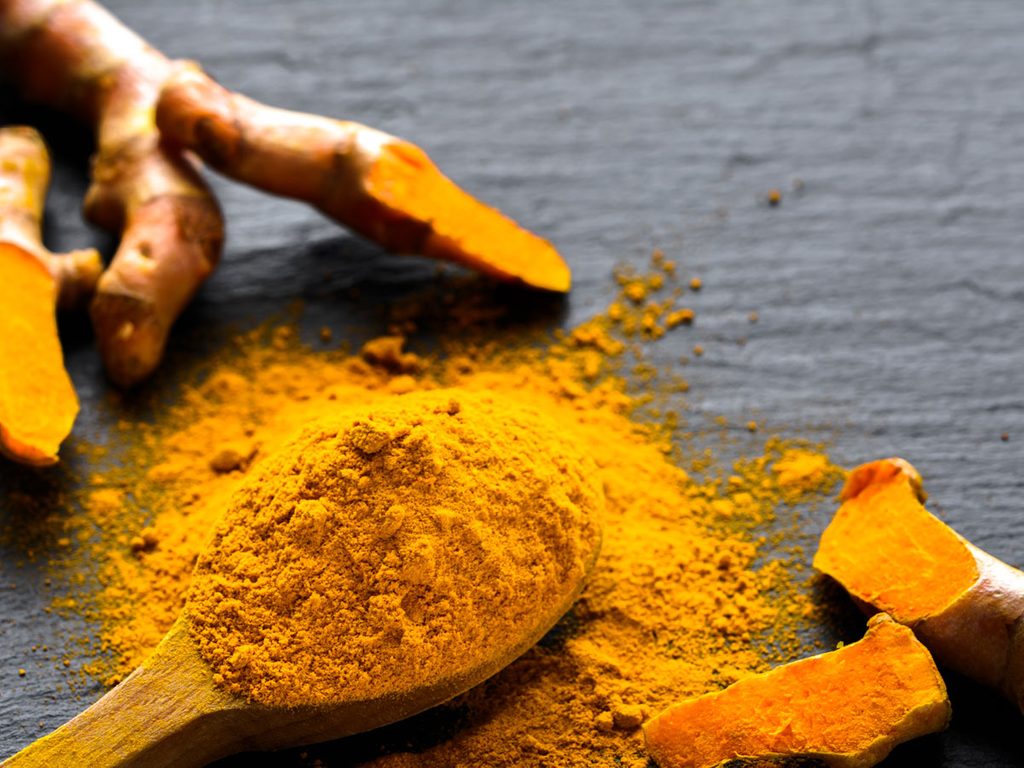How Much Turmeric You Need to Reduce Inflammation

The spice is powerful, but it's not a cure-all.
Turmeric is a bright orange-yellow spice that’s a staple ingredient in Asian cooking. Now, you can find it as an ingredient in everything from teas and lattes to protein bars and supplements. Its popularity has to do with research showing turmeric has potential anti-inflammatory benefits. But how much should you take to achieve these benefits? Experts note that the best, safest amount to take depends on a few factors.
First, there are a few different ways to take turmeric.
Common options include the root powder, a turmeric extract, or a curcumin supplement. Curcumin—the main active component that gives turmeric its anti-inflammatory and antioxidant properties—only makes up 3 percent of dry turmeric, according to Ali Webster, PhD, RD, associate director of Nutrition Communications at the International Food Information Council Foundation in Washington, DC. “Turmeric extracts or isolated curcumin found in dietary supplements are much higher in curcumin, so they’re more likely to have an impact on inflammation than the dried spice,” she says. So a dash of turmeric in the occasional recipe may not have lasting anti-inflammatory effects—unless a person consumes turmeric or curcumin supplements on a regular basis, too.
Most research says that taking in at least one gram of curcumin per day is necessary for measurable anti-inflammatory effects, Webster says. The Arthritis Foundation recommends 400 to 600 milligrams (mg) of turmeric capsules, three times per day, or half to three grams of the root powder per day to help reduce inflammation. One study in the Journal of Medicinal Food found that people with arthritis benefited from one gram of curcumin per day. (Here are some delicious turmeric recipes that you’ll want to make right away.)
It’s also important to note that the body doesn’t absorb the spice well by itself, according to Malina Linkas Malkani, RDN, a dietician in Rye, New York and spokesperson for the Academy of Nutrition and Dietetics. Malkani recommends combining turmeric with black pepper and a source of fat like olive oil or avocado for maximum absorption. Although the amount normally used for cooking is safe for humans and likely won’t cause side effects, consuming extremely high amounts could cause gastrointestinal issues like an upset stomach, nausea, diarrhea, as well as dizziness, according to both Malkani and Webster.
Considering taking turmeric to reduce inflammation?
The main takeaway is that you really need to let your doctor know—especially if you take other medications. All of them must be reviewed to determine if any potential drug interactions exist that would pose a health risk, says Nesochi Okeke-Igbokwe, MD, a New York City-based internist. For instance, if one were taking certain blood thinner medications, taking turmeric as well may heighten the risk of bleeding.
More research is necessary to determine a specific dose of turmeric or curcumin guaranteeing health benefits, but it won’t hurt to add some of the ground spice to your recipes or to speak with your doctor about possible supplementation and proper dosage.
Now that you know how much turmeric can help reduce inflammation, next check out which foods nutritionists never eat—so you shouldn’t either.




